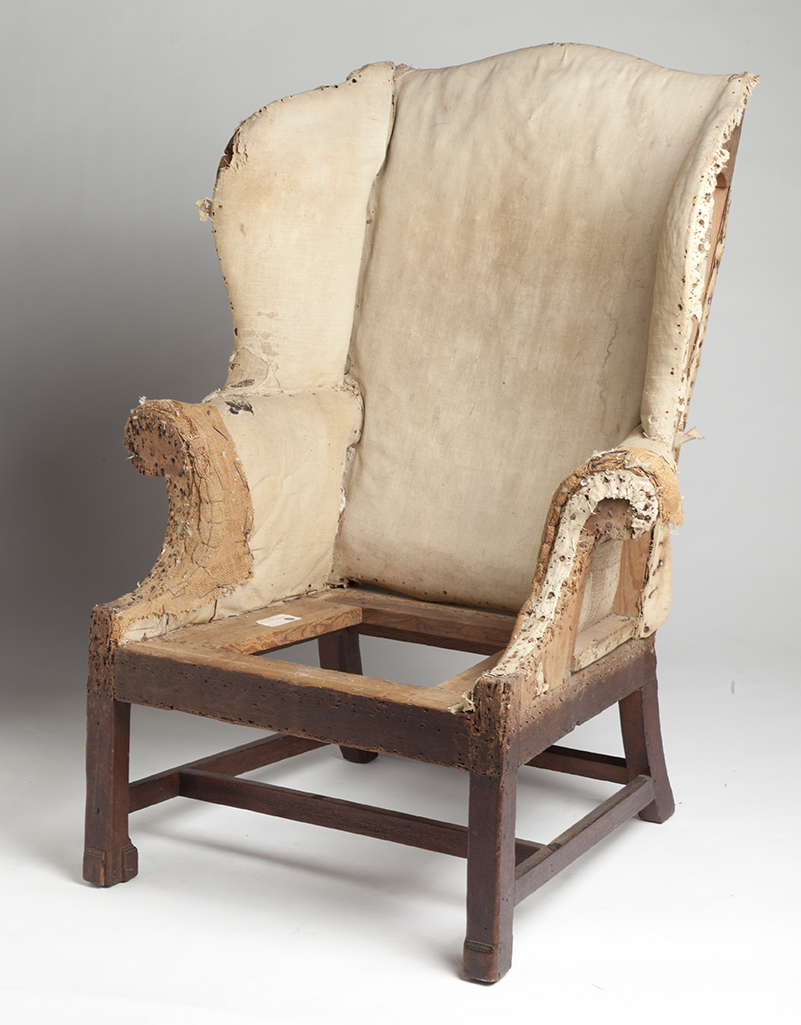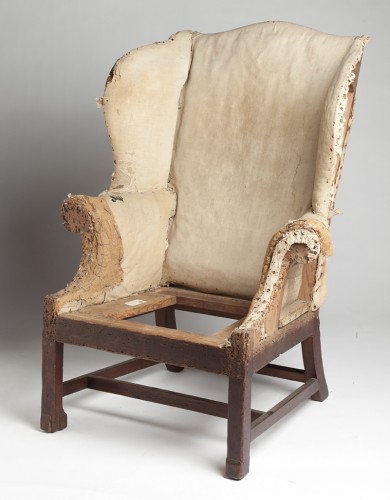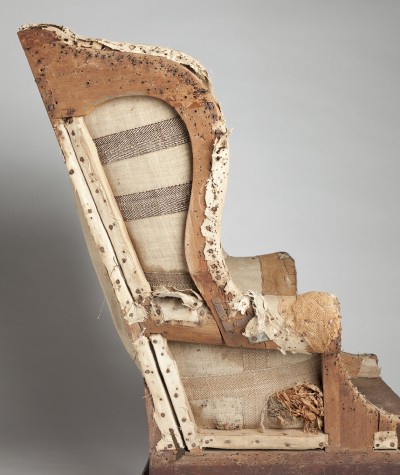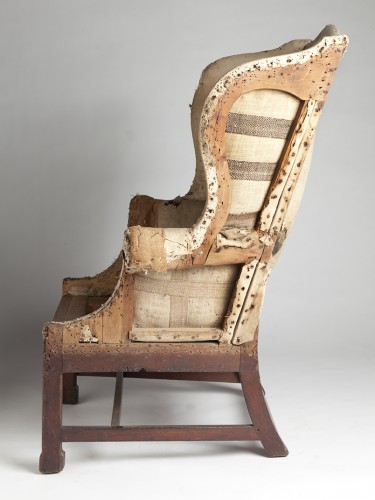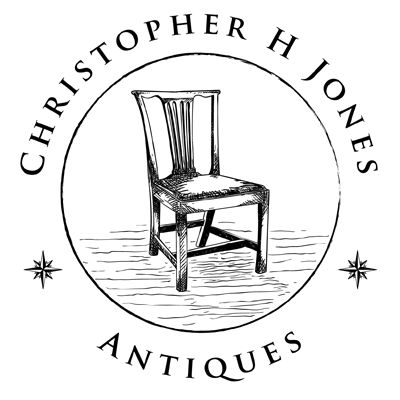MARYLAND EASY CHAIR
In an Extraordinary State of Preservation with Original Foundation Upholstery
Descended in the Teackle Family of Princess Anne, Somerset County, Maryland
Attributed to Annapolis or Baltimore
Circa 1765
Despite inventory references to southern easy chairs, very few have survived and only a handful with their original upholstery largely intact. This easy chair was recorded by the MESDA field survey (S-4240) in 1975 and attributed at that time to eastern Maryland, probably Annapolis, a conclusion that recent research confirms. The first owner of the chair can be identified from family records as John Teackle (1753 -1817) of Kegotank who resided in a large twenty room mansion in Accomack County, Virginia that was destroyed in the late 19th century. Teackle, a successful merchant, married Elizabeth Upshur Dennis (1761-1811) of Worchester County and was the father of Littleton Dennis Teackle, a prominent merchant in his own right. His son’s home, Teackle Mansion in Princess Anne, Maryland has survived and is today an important historic home site.
Given his broad business interests, it is not surprising that by 1807 John Teackle had a home in Georgetown, District of Columbia (3425 Prospect Street) that he purchased from John Thomson Mason for $5,000. John and Elizabeth sold this property in 1810 to Charles Worthington and it seems established a residence in Philadelphia. (Which he apparently did not own.) Elizabeth died in 1811 and John Teackle died during a visit to Princess Anne on September 15, 1817 as described in family correspondence: “He came here by way of Philadelphia but remained debilitated to a great degree for a week, when by a sudden & violent turn of his complaint, he resigned his breath in to the keeping of his God – I never witnessed & could have formed no idea of so perfect a constancy of mind & calm resignation in the hour of trial, as he displayed…” (Elizabeth U. Teackle to sister Anne Eyre, Teackle Mansion Website) John Teackle left an extensive estate that was divided among his heirs according to his will of 1816. Some items of furniture and several personal possessions such as a desk, his portrait, a monogrammed gun and a looking glass were detailed as specific bequests. Other items such as the “mahogany furniture, chairs and looking glasses which are in Philadelphia” were divided into thirds and left to his daughters. (A room by room inventory in the Downs Collection at Winterthur that is thought to be of John Teackle’s Philadelphia home lists an “Easy Chair”).
The evolution of the easy chair as a specific furniture form is somewhat unclear, its history of use prior to the 18th century obscure and subject to some debate. Easy chairs were costly luxuries due primarily to the expense of the fabrics necessary for the base upholstery and for the show coat. Because of their high costs they were and are relatively rare as compared with other seating furniture. The costs associated with the chair would seem to associate the form with high status, luxury goods, normally displayed in one of the primary and public chambers of a home. Its frequent use as a close stool or commode and the use of easy chairs by the sick, elderly or by women after childbirth with the attendant likelihood of soiling however are at odds with the use of expensive fabrics and expectation of prominent display. Significant research on the history and use of easy chairs has been published by Robert Trent in American Furniture 1993 and elsewhere. He suggests that the easy chair form probably evolved from chairs designed to meet the needs of the sick or from aristocratic sleeping chairs dating to the late 16th and early 17th centuries. Trent concludes that easy chairs would have normally been located in bed chambers and only rarely in parlors or more public spaces.
The distinctive “Marlborough” style front feet on this chair are commonly associated with Philadelphia furniture but appear with some regularity in Maryland pieces. The proximity of Maryland’s two cabinet making centers Baltimore and Annapolis to Philadelphia, the interchange of artisan and the overlapping social/economic networks insure that there are significant commonalities between the furniture of Philadelphia and Maryland. The construction, history and secondary woods found in the Teackle chair all point to Maryland origins. The most notable point of construction is the lack of the increased tilt or splay of the vertical members described by Trent as characteristic of Philadelphia easy chairs. It should also be noted that this chair has mitered corners of the Marlborough feet rather than the overlapping joints that were the common practice in Philadelphia shops. The principal secondary wood utilized in the chair’s frame is early growth hard yellow pine, (along with poplar and ash) a strong indicator of southern origins. It is also far more likely that an expensive upholstered chair such as this easy chair would, if made in Philadelphia, been made of mahogany rather than walnut. The period during which the chair was most fashionable and most probably acquired would have been 1760-1770 when the Teackles were focused on their extensive land holdings on the eastern shore of Maryland and Virginia – well before John Teackle moved to Georgetown or Pennsylvania.
Condition: This easy chair survives in a remarkable state of preservation with its original hair stuffing covered by the first and second layers of fabric that are essentially undisturbed. The original hand forged, rose-head nails and tacks secure the upholstery fabric, webbing and the frame elements. Small traces of an early show or finish layer of upholstery remain attached to several nails. The frame is original with only minor repairs that include at least two old metal braces that are attached by screws added to reinforce the joints. There are losses to the cuffs to the front feet, and the rear legs may have been slightly reduced, possibly to increase the rake. The rectangular framing or deck for the chamber pot may be an early replacement or addition. The cross stretcher beneath the seat, probably removed when converted to a close stool, has been replaced.
sold

